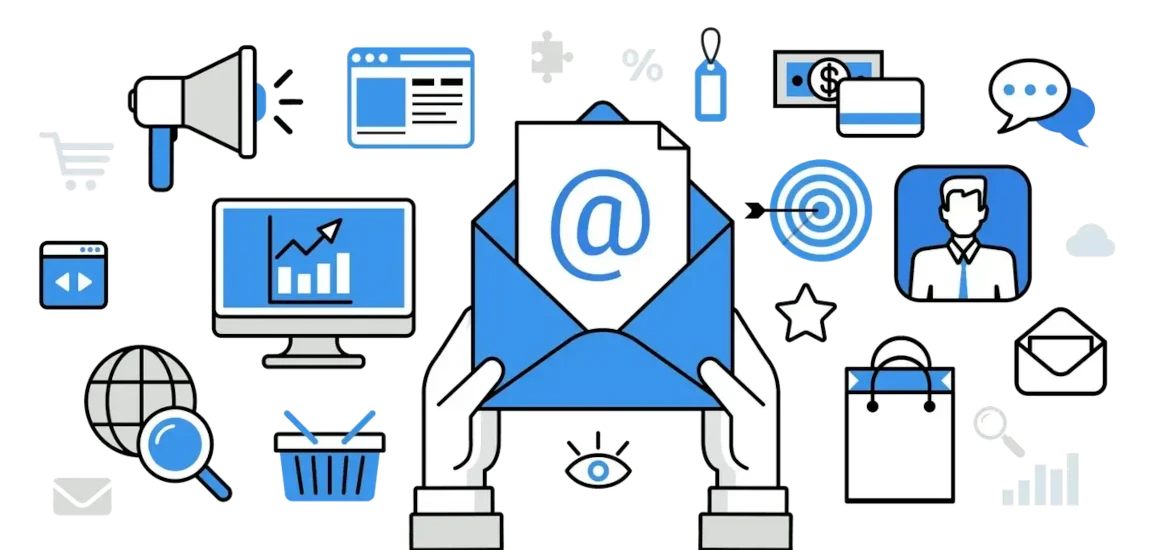Email Marketing Statistics for 2024: Trends, Insights, and ROI
Published on 17-Nov-2024 23:03
As we move further into 2024, email marketing remains a powerhouse in digital marketing. Despite the rise of social media and other platforms, email marketing continues to deliver high ROI, making it a go-to strategy for businesses of all sizes. Here, we explore the most recent email marketing statistics, trends, and insights to understand how this channel is evolving and why it continues to be effective.
1. ROI and Revenue Impact
One of the primary reasons marketers continue to prioritize email is its impressive return on investment (ROI).
- Average ROI: Email marketing boasts an average ROI of $42 for every $1 spent, with some industries, such as e-commerce, seeing even higher returns.
- Revenue Contribution: A significant portion of sales comes from email marketing, with reports indicating that 40% of marketers consider email their top-performing channel for revenue generation.
- Budget Allocation: Marketers in 2024 allocate around 15-20% of their digital marketing budget to email campaigns, reflecting the importance of this channel for driving sales and engagement.
2. Open and Click-Through Rates
Email engagement metrics like open rates and click-through rates (CTR) are essential for evaluating campaign effectiveness.
- Average Open Rate: In 2024, open rates remain stable, with an average of 20-25% across industries. However, personalized emails see an open rate increase of up to 40%.
- Click-Through Rate (CTR): The average CTR for email campaigns is around 3.5%. Targeted emails, especially those with tailored product recommendations, see up to 5-6% CTR.
- Mobile-Optimized Emails: Over 85% of people open emails on mobile devices at least some of the time, and brands that use mobile-optimized designs report 15% higher engagement.
3. Personalization and Segmentation
Personalization and segmentation are crucial to email marketing success in 2024, as consumers expect relevant content.
- Higher Engagement with Personalization: Personalized email subject lines have an open rate 26% higher than generic ones.
- Revenue Boost: Brands using advanced segmentation and dynamic content in emails report a 760% increase in revenue compared to those that don’t.
- Behavioral Targeting: Email campaigns triggered by customer actions (like abandoned cart emails) generate over 200% more revenue than standard bulk campaigns, with abandoned cart emails alone having a 45% open rate on average.
4. Automation and AI in Email Marketing
AI and automation tools have transformed email marketing, allowing for more efficient, targeted, and timely campaigns.
- Automation Popularity: Over 70% of marketers in 2024 rely on email automation to send behavior-triggered emails, welcome series, and re-engagement campaigns.
- Efficiency Boost: AI-powered tools enable marketers to personalize subject lines, email content, and send times. This contributes to a 20% increase in click-through rates when using AI for segmentation.
- Drip Campaign Success: Automated drip campaigns have 80% higher open rates and 3x the engagement compared to traditional campaigns.
5. Interactive and Visual Content
Interactive and visually engaging content has become more popular in email marketing, helping to boost engagement and conversions.
- Rich Media Integration: Emails with GIFs or short videos see an increase in click-through rates by up to 300% compared to static content.
- Surveys and Polls: Interactive elements like surveys and polls are becoming popular, with over 60% of brands using them to increase engagement and gather customer feedback.
- Dynamic Content Blocks: More brands are using dynamic content, which allows elements in emails to update based on user actions. These emails see double the engagement of non-interactive emails.
6. Privacy and Data Management
With increasing focus on data privacy, marketers are adjusting their email strategies to stay compliant with evolving regulations.
- Consumer Trust and Consent: In 2024, 95% of customers expect transparency around data collection, and 78% are more likely to engage with brands that prioritize data privacy.
- Opt-In Rates: Email subscription forms have an average opt-in rate of 1.95% across industries. Offering incentives, such as discounts, boosts opt-in rates to about 3-5%.
- GDPR and CCPA Compliance: Brands are focusing on compliance with GDPR, CCPA, and other regulations by implementing double opt-ins and clear unsubscribe options. Around 65% of companies now use double opt-in forms to ensure compliance and build a high-quality subscriber base.
7. Evolving Consumer Preferences
Consumers’ email habits are shifting, with trends toward shorter, more personalized, and mobile-friendly content.
- Shorter, Concise Emails: Over 75% of consumers prefer emails that get straight to the point, favoring content that is easy to read on mobile.
- Frequency Preference: Nearly 50% of consumers prefer receiving emails from their favorite brands 1-3 times per week. Excessive emailing is a leading cause of unsubscribes.
- Relevance is Key: Irrelevant content remains a top reason for unsubscribing, with 68% of consumers reporting they will unsubscribe if the content isn’t aligned with their interests.
8. Key Industry-Specific Insights
Different industries report varying email performance metrics based on customer preferences and campaign strategies.
- E-commerce: Cart abandonment emails have an average conversion rate of 10-15%. Product recommendation emails result in a 5x increase in conversions.
- Finance: Financial services see high engagement on educational content, with open rates around 40% for emails offering financial advice or insights.
- B2B: B2B email marketing sees an average open rate of 27% with lead-nurturing emails driving most conversions.
Conclusion: The Power of Email Marketing in 2024
The 2024 email marketing landscape shows that, when done strategically, email marketing can be an incredibly effective channel for driving revenue and engagement. Personalization, segmentation, and automation are essential for successful campaigns, while interactive content and privacy-compliant practices build customer trust. For businesses, these statistics emphasize the ongoing value of email marketing, making it a priority investment for those looking to stay competitive in today’s digital landscape.
